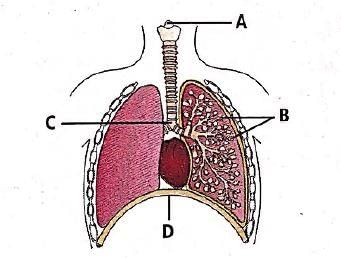NEET Exam > NEET Tests > NCERTs at Fingertips: Textbooks, Tests & Solutions > Test: Respiratory Organs (NCERT) - NEET MCQ
Test: Respiratory Organs (NCERT) - NEET MCQ
Test Description
10 Questions MCQ Test NCERTs at Fingertips: Textbooks, Tests & Solutions - Test: Respiratory Organs (NCERT)
Test: Respiratory Organs (NCERT) for NEET 2025 is part of NCERTs at Fingertips: Textbooks, Tests & Solutions preparation. The Test: Respiratory Organs (NCERT) questions and answers have been
prepared according to the NEET exam syllabus.The Test: Respiratory Organs (NCERT) MCQs are made for NEET 2025 Exam. Find important
definitions, questions, notes, meanings, examples, exercises, MCQs and online tests for Test: Respiratory Organs (NCERT) below.
Solutions of Test: Respiratory Organs (NCERT) questions in English are available as part of our NCERTs at Fingertips: Textbooks, Tests & Solutions for NEET & Test: Respiratory Organs (NCERT) solutions in
Hindi for NCERTs at Fingertips: Textbooks, Tests & Solutions course. Download more important topics, notes, lectures and mock
test series for NEET Exam by signing up for free. Attempt Test: Respiratory Organs (NCERT) | 10 questions in 10 minutes | Mock test for NEET preparation | Free important questions MCQ to study NCERTs at Fingertips: Textbooks, Tests & Solutions for NEET Exam | Download free PDF with solutions
Test: Respiratory Organs (NCERT) - Question 1
Which of the following options is incorrect about the larynx (sound box)?
Detailed Solution for Test: Respiratory Organs (NCERT) - Question 1
Test: Respiratory Organs (NCERT) - Question 2
Which of the following structures close the glottis during swallowing to prevent the entry of food wind pipe
Detailed Solution for Test: Respiratory Organs (NCERT) - Question 2
Test: Respiratory Organs (NCERT) - Question 3
Tracheal tubes are present for which type of organisms?
Detailed Solution for Test: Respiratory Organs (NCERT) - Question 3
Test: Respiratory Organs (NCERT) - Question 4
The given figures are of human larynx, front view (i) and vertical section. (ii) Identify the labelled parts A to D.

Detailed Solution for Test: Respiratory Organs (NCERT) - Question 4
Test: Respiratory Organs (NCERT) - Question 5
Study the given figure of respiratory passage carefully and identify the parts labelled as A, B, C, D and E.

Detailed Solution for Test: Respiratory Organs (NCERT) - Question 5
Test: Respiratory Organs (NCERT) - Question 6
Aquatic arthropods and mollusks use which organ for respiration?
Detailed Solution for Test: Respiratory Organs (NCERT) - Question 6
Test: Respiratory Organs (NCERT) - Question 7
Mammalian lungs have an enormous number of minute alveoli (air sac); This is to allow
Detailed Solution for Test: Respiratory Organs (NCERT) - Question 7
Detailed Solution for Test: Respiratory Organs (NCERT) - Question 8
Test: Respiratory Organs (NCERT) - Question 9
The given figure shows the diagrammatic view of human respiratory system. Identify A, B, C and D.

Detailed Solution for Test: Respiratory Organs (NCERT) - Question 9
Detailed Solution for Test: Respiratory Organs (NCERT) - Question 10
|
257 docs|234 tests
|
Information about Test: Respiratory Organs (NCERT) Page
In this test you can find the Exam questions for Test: Respiratory Organs (NCERT) solved & explained in the simplest way possible.
Besides giving Questions and answers for Test: Respiratory Organs (NCERT), EduRev gives you an ample number of Online tests for practice




















